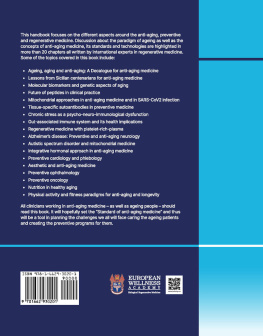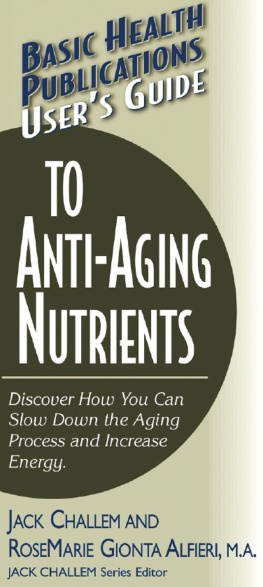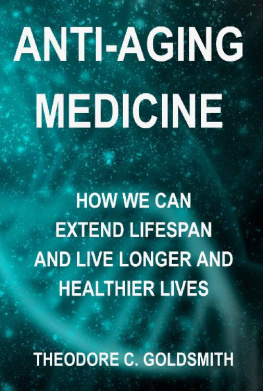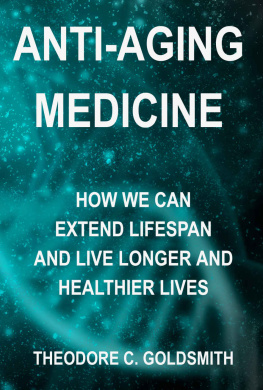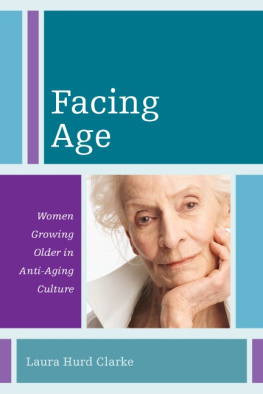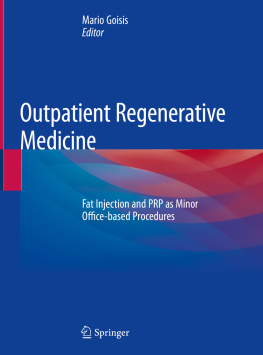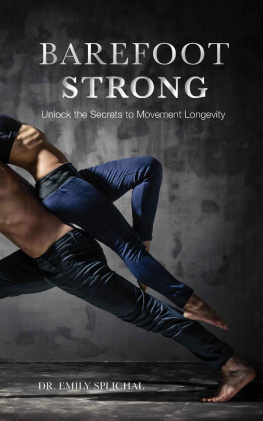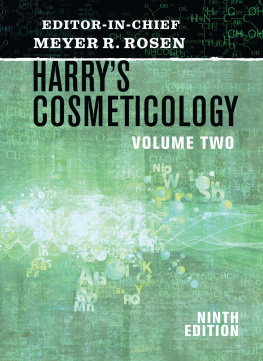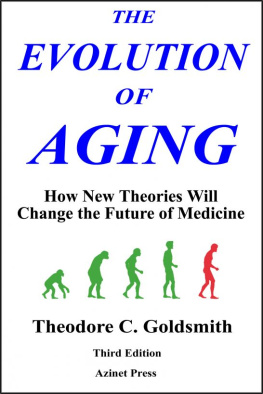

Handbook of Anti-Aging Medicine
Published by EUROPEAN WELLNESS ACADEMY
Copyright 2022 by Mike K.S. Chan, Arseniy Trukhanov, Vittorio Calabrese, Michael Papacharalampous, and Yuriy Nalapko
All rights reserved. Neither this book, nor any parts within it may be sold or reproduced in any form or by any electronic or mechanical means, including information storage and retrieval systems, without permission in writing from the author. The only exception is by a reviewer, who may quote short excerpts in a review.
Library of Congress Control Number: 2022941479
ISBN (paperback): 9781662930201
eISBN: 9781662930218
Dedication and Acknowledgement
This Book is based on research, education and knowledge sharing
of many experts worldwide in various fields of Medicine.
We are grateful to all contributors and colleagues who encouraged us,
shared their content and took part in creating this valuable Book.
Special thanks and gratitude is extended to Prof. Dato Sri Dr. Mike K.S. Chan,
the Researcher, Founder and Chairman of European Wellness Biomedical Group,
with whose participation and contribution, this Book was finally published.
It was an enormous delight and enjoyment working on this Book together!
TABLE OF CONTENTS
Preface
The rapid progress of the past three decades
has led to the geroscience field near a point
where human interventions in aging are plausible
Joseph C. Kruempel,
Computational tools for geroscience
(www.keaipublishing.com/TMA)
There is one official definition of health provided by WHO. However, we can find many answers to the question, What is anti-aging medicine about?
The easiest solution is asking A4M, the American Academy of Anti-Aging Medicine, which gave start to anti-aging movement in 1992. In 2012, they published Encyclopedia of Clinical Anti-Aging Medicine & Regenerative Biomedical Technologies (www.worldhealth.net). They suggested the following definition: medical specialty founded on the application of advanced scientific and medical technologies for the early detection, prevention, treatment and reversal of age-related dysfunction, disorders and diseases. The education based on this concept has been spread through 120 countries, providing more than 30,000 physicians with their diplomas. The co-founders of A4M began their careers in Sports Medicine, which has definitely impacted their model: keep the body functioning at its peak for maximizing the healthy human lifespan.
The European Society of Anti-Aging Medicine (esaam.ecopram.eu) was originally established in 2003 in Paris as subsidiary of A4M. In 2006, it became independent by new registration in Vienna, where it organized the first European Congress on Preventive, Regenerative and Anti-aging Medicine (ECOPRAM). The founders of ESAAM came from both science and clinical medicine: gerontology, physiology, biochemistry, dermatology, endocrinology, and aesthetic medicine, thereby influencing the ESAAM model. The ESAAM model used biomedicine from molecular-genetic diagnostics to personalize interventions of 4P (personalized, preventive, predictive and precision) medicine. The goal of the ESAAM protocol is to optimize functional parameters based on early biomarkers of age-related diseases, epigenetic and biopsychosocial models. This model came from physical and rehabilitation medicine (ISPRM) and a basic document ICF approved by WHO in 2001. Our goal is not to find the disease according classification ICD-10 and treat it by traditional clinical medicine, but to use preclinical prevention medicine to manage early symptoms and risks associated with age-related diseases. These concepts are similar to the concepts of Uni-Age of Japanese Society of Anti-Aging medicine: both involve monitoring of future longevity from childhood with the creation of the microbiome with no age limits for personalized protocols.
The goal of ESAAM is not to create a new medical specialty. ESAAM is based on taking a multidisciplinary approach when a physician monitors the health of the patient and coordinates the activities of endocrinologists, dermatologists, aesthetic medicine doctors, cardiologists and angiologists, neurologists, traumatologists, ophthalmologists and dentists. As the result of the anti-aging program, the absence of diseases can lead to optimal function and high quality of physical and social longevity.
The decision to write this handbook was motivated by the need to share our basic knowledge of 4P medicine with doctors in clinical medicine, which is still limited by the demands of insurance industry, ICD-10 classifications and population statistics protocols. The main questions we tried to answer are as follows: What are the theoretical bases of age-related diseases and how we can diagnose and correct age-associated dysfunctions?
The book is separated into 4 parts:
Part One, Theoretical aspects of anti-aging medicine, is dedicated to the meaning and difference of ageing and anti-aging, gerontology aspects based on the lessons from Sicilian centenarians, genetic and genomic aspects of aging and active longevity, the significance of molecular biomarkers of aging for preventive medicine, the role of immunology profile and gut-associated immune system, the mechanisms of mitochondrial dysfunction and hormesis, stress diagnostic and therapy, and influences of protocols of personalized interventions.
Part Two, Advances in regenerative and aesthetic medicine, presents current advancements in peptide therapy, clinical protocols for platelet reach plasma technology, the future of aesthetic medicine with recombinant growth factors as the next step of PRP technology and molecular biomarkers of skin aging for personalized aesthetic interventions.
Part Three, Personalized preventive medicine, highlights the basic symptoms, risk and biomarkers of age-related diseases in cardiology, neurology, oncology, phlebology, ophthalmology and endocrinology while expressing the long term practical experience of clinicians in each field.
Part Four, Methods and technologies for personalized interventions, describes the advances and the role of hormesis and nutrition in healthy ageing, vegetable oils for antioxidant therapy, the current paradigms of physical activity and fitness and drugs for personalized interventions with potential anti-aging effects.
This handbook does not claim to answer all theoretical and practical questions reflecting the needs of translation medicine from geroscience to practical protocols of anti-aging medicine. Instead, it opens the ESAAM publication series, which should cover basic aspects of current panels of aging biomarkers, methods and technologies for early detection of age-related dysfunctions, principals and protocols of health monitoring in anti-aging programs, the structure, technologies and staff of future anti-aging medicine clinics, potential advances of regenerative medicine and stem cells therapy, symbiosis of wellness, and medical spa and fitness in anti-aging clinics.
The anti-aging medicine is nearly 30 years old. Now is the time for the new fellows to promote the new concept of healthy ageing and optimum functioning for physical and social longevity.

